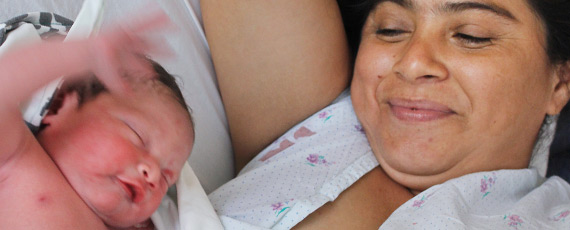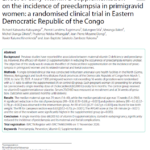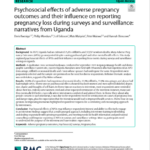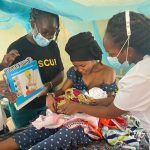Intrapartum-related complications are responsible for approximately one-quarter of newborn deaths and half of stillbirths.
When complications arise during childbirth and are not recognized or properly dealt with on a timely basis, the baby may emerge stillborn or be born alive but severely stressed and may not spontaneously begin to breathe. Unless stimulation and efforts to resuscitate are begun immediately, many of these babies quickly die of birth asphyxia.
570k
estimated number of annual newborn deaths attributable to childbirth complications
1.3m
estimated number of intrapartum stillbirths (2015)
80
percentage of women who give birth in a health facility globally from 2015 – 2021
10m
estimated number of newborns that do not breathe at birth
All data on this page represents the most recent data available, unless otherwise noted. Please visit our Newborn Numbers page and download the Excel spreadsheet to explore the data further.
What can be done?
Most outcomes associated with complications of childbirth are preventable. The proportion of term deliveries that end in death during or shortly after labor is a sensitive and responsive measure of the quality of labor and delivery care. It is important in and of itself, but it also reflects readiness for managing other important complications for the mother or newborn.
Pregnant women need a good assessment late in pregnancy to anticipate problems and ensure they receive any needed special care.Teaching expectant mothers about the importance of seeking healthcare can also prevent adverse birth outcomes. Giving birth in a center where assisted delivery or caesarian section can be provided quickly can also save a baby’s life. Good monitoring of the mother and fetus throughout labor ensures that prompt action can be take to prevent conditions from evolving to a life-threatening state.
Ending dangerous practices, like augmenting labor with oxytocin under unsafe conditions or applying pressure on the mother’s belly during labor, can prevent fetal deaths.
And for those cases in which the baby emerges in a very stressed state and is unable to start breathing, competent action taken within the “golden minute” can keep the baby alive until breathing begins. Finally, suitable equipment needs to be kept at the ready for all births, and provisions in place to ensure that health workers attending births are regularly practicing to maintain their resuscitation skills.
Key Resources
- Essential Newborn Care Course (WHO) – interim version of the second edition (2022)
- ENC Now! (American Academy of Pediatrics (AAP) and Laerdal Global Health) – a digital version of the new WHO Essential Newborn Care 1 Basic Course (ENC) (formerly Helping Babies Breathe).
- Neonathalie Live – Newborn Ventilation Trainer
- WHO guidelines Managing complications in pregnancy and childbirth: A guide for midwives and doctors (2017)
- Every Newborn Action Plan
Helping Babies Survive

Helping Babies Survive is a package of evidence-based training programs designed to teach the necessary skills to reduce neonatal mortality in resource-limited environments. The first program Helping Babies Breathe (HBB) was developed in 2010 by the American Academy of Pediatrics (AAP) in keeping with WHO recommendations. Studies have shown that it can reduce neonatal mortality by up to 47%; saving thousands of asphyxiated newborns. The success of HBB led to a global request for additional programs (such as Essential Care for Every Baby, Essential Care for Small Babies, and Improving Care of Mothers and Babies) addressing other leading causes of newborn death by equipping providers with the necessary skills and competencies to deliver high quality care to newborns during and after birth.
The partnership is not only providing competency-based, hands-on training to service providers but working with ministries of health and their partners to provide functional resuscitation equipment for all health facilities where babies are born.
Essential Newborn Care Course

Please note this section will be updated in 2022. See interim version of the second edition of the Essential Newborn Care Course (ENCC) for more information.
The Essential Newborn Care Course (ENCC) is a WHO training program that works to ensure that health workers have the skills and knowledge to provide appropriate care at the most vulnerable period in a baby’s life. Health workers are taught how to use the WHO’s Pregnancy, Childbirth, Postpartum and Newborn Care: A Guide for Essential Practice.
In particular, the course focuses on the sections concerned with newborn care, which provide up-to-date evidence-based information and management of babies with a range of needs in the initial newborn period. The course includes:








